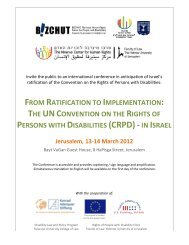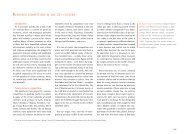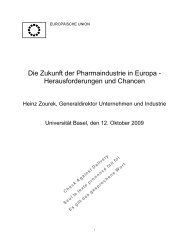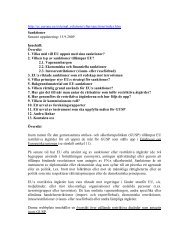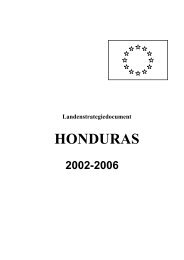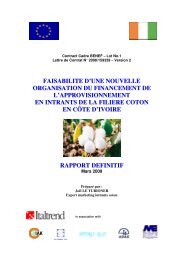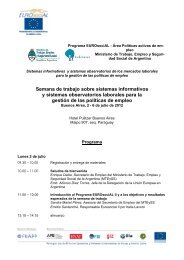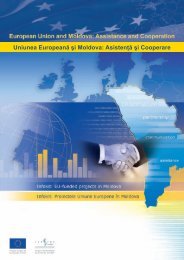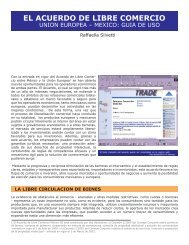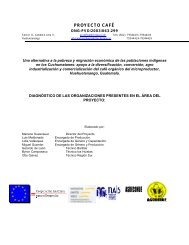Vision Group Report: Invigorating the Indonesia-EU Partnership
Vision Group Report: Invigorating the Indonesia-EU Partnership
Vision Group Report: Invigorating the Indonesia-EU Partnership
You also want an ePaper? Increase the reach of your titles
YUMPU automatically turns print PDFs into web optimized ePapers that Google loves.
In <strong>the</strong> last decade, <strong>the</strong> expansion of international trade in fishery products has exceeded <strong>the</strong> growth in total fish<br />
production in <strong>the</strong> world. This rapid expansion reflects <strong>the</strong> large increase in consumption of marine products in <strong>the</strong> <strong>EU</strong><br />
and US markets as well as many o<strong>the</strong>r regions in <strong>the</strong> world. Among <strong>the</strong>se fast-growing markets, <strong>the</strong> European Union is<br />
not only <strong>the</strong> world’s largest market (accounting for 25 percent of <strong>the</strong> world’s total imports), but it is among <strong>the</strong> fastest<br />
growing markets for high-value imports like shrimp, tuna, bass and bream. The prospects for <strong>the</strong>se markets continue<br />
to be favorable. Overall, <strong>the</strong> outlook for <strong>the</strong> global fishery market is robust, and <strong>EU</strong> fish imports are expected to grow<br />
by 8 percent annually in <strong>the</strong> medium-term.<br />
There is considerable scope for <strong>Indonesia</strong> to increase <strong>the</strong> amount of fisheries that it exports to <strong>the</strong> <strong>EU</strong> market. <strong>Indonesia</strong><br />
accounted for only 1.4 percent of total <strong>EU</strong> imports from third countries in 2010. If it were to expand its share of exports<br />
to <strong>the</strong> <strong>EU</strong> market to <strong>the</strong> same proportion as <strong>the</strong> European Union’s share of world imports, <strong>Indonesia</strong>’s foreign exchange<br />
revenue from its fishery exports would more than double.<br />
For <strong>Indonesia</strong>, <strong>the</strong> rapid expansion of <strong>the</strong> global fishery market and <strong>the</strong> European Union’s strong market for high-value<br />
imports offers a number of excellent opportunities.<br />
84<br />
XVI FISHERIES<br />
• <strong>Indonesia</strong> has a cost advantage in its proximity to large marine and fishery resources and its abundant labor<br />
supply, which helps to offset shipping costs to <strong>the</strong> <strong>EU</strong> market.<br />
• <strong>Indonesia</strong>’s fishery industry has <strong>the</strong> chance to reverse <strong>the</strong> <strong>EU</strong> market share losses it suffered in <strong>the</strong> last decade<br />
because of external competition from large exporters like Ecuador and China, as well as <strong>the</strong> internal inertia in<br />
addressing testing and accreditation hindrances and trade impediment.<br />
• Secondly, <strong>Indonesia</strong>’s exports could be increased in terms of traditional exports and diversified into various<br />
o<strong>the</strong>r fish species and processed products that are in high demand abroad, for example, <strong>the</strong> main exports from<br />
aquaculture are shrimp (unfrozen, frozen and canned), crabs (unfrozen, frozen and canned), frog legs (fresh or<br />
chilled), ornamental fish (freshwater and mariculture), mollusks (scallops and snails), including capture products<br />
like tuna, jelly fish and coral fish as well as fish fat and oil and shrimp crackers.<br />
• A third opportunity lies in aquaculture growth and development, where opportunities exist for communitybased<br />
economic activities and rural development, along with greater foreign exchange earnings from exported<br />
aquaculture products. Given that two-thirds of <strong>Indonesia</strong>’s territory consists of marine and inland waters with an<br />
abundance of natural resources, <strong>the</strong> development of aquaculture and sustainable capture fisheries has <strong>the</strong> potential<br />
to make <strong>the</strong> fisheries industry a leading engines of growth and development for <strong>the</strong> country.<br />
The fishery market is highly price competitive, and some countries have a competitive advantage because of preferential<br />
tariff rates under free trade arrangements (FTAs) with <strong>the</strong> European Union, like those under <strong>the</strong> unilateral instrument<br />
of GSP plus, or <strong>the</strong> Everything But Arms (EBA) arrangement that include duty-free and quota-free access for products<br />
originating in Least Developed Countries (LDCs). <strong>Indonesia</strong> is a GSP beneficiary with preferential duties on fisheries.<br />
For <strong>EU</strong> fishery imports, <strong>the</strong> average MFN tariff rate is 10.8 percent, with a range of 0 to 23 percent; <strong>the</strong> average GSP<br />
rate is 7.1 percent, with a range from 0 to 19.5 in <strong>the</strong> case of some products like fresh, chilled or frozen sardines, some<br />
tunas like long-finned and yellow-fin tuna, and skipjack or stripe-bellied bonito. For crustaceans, an ad valorem tariff<br />
of 11.1 percent applies to third countries, with a range of 6 to 18 percent; <strong>the</strong> preferential tariff rate for GSP recipient<br />
countries is 5.1 percent, with a range of 2.1 to 14.6 percent. Between 2003 and 2008, <strong>Indonesia</strong> was <strong>the</strong> beneficiary<br />
of an annual tariff quota of 2,832.5 tons of canned tuna exports to <strong>the</strong> European Union. The duty applicable was 12<br />
percent. Since 2009, <strong>the</strong> applicable tariff has reverted to that of <strong>the</strong> most-favored nation (MFN) at a rate of 20.5.




